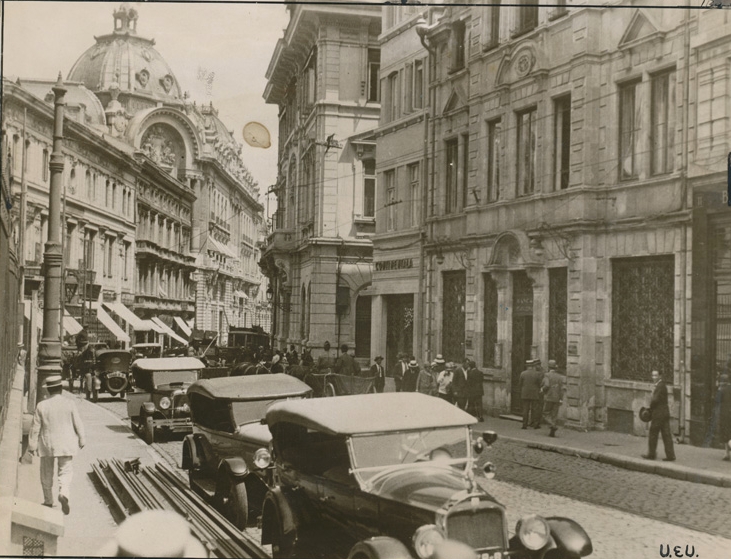The unification of all Romanians on December 1, 1918 opened a new chapter in the history of the country. Romania after the First World War was deeply transformed.
The figures reveal this like no other. If, in 1912, Romania had an area of 130.177 km² with a population of 7.160.682 inhabitants, it reached in 1920 an area of 295.049 km², with 15.541.424 inhabitants, thus being the tenth country in Europe in size and the second, in Central Europe, in terms of population, after Poland. Transylvania and Banat brought significant industrial output, and the oil fields in the Old Kingdom promised to become a source of significant income, along with agriculture.
The economic prospects seemed good at first for Romania, but at a deeper look at the Romanian interwar economy and society, important problems could be observed. The census of 1930 showed that the vast majority of Romania’s population (78.2%) was involved in agriculture, only 7.2% was employed in industry, 3.2% in trade, 1.7% in transport, etc. The agrarian reform of 1921, one of the most radical in Eastern Europe, removed the inequitable distribution of land (5.835 landowners owned 47.7% of the arable land), but it caused the fragmentation of property, which led to economic inefficiency.
During the interwar period, the effort to develop the industry was intense, as can be seen from the increase of motive power, from 14.8 hp (horsepower) per thousand inhabitants in the Old Kingdom in 1915, to 30.5 hp per thousand of inhabitants towards the end of the interwar period.
Due to the structure and trends of the national economy, inter-war Romania appears as a country of contrasts: in agriculture, small, poor peasant households were predominant; the industry had a small share of the national economy, but it was expanding, the main branches being the oil sector, and the metallurgical one. The contrasts and fractures between the economic and social sectors, and the different social classes were perfectly visible in Romania. Foreign observers are unanimous in revealing the strange juxtaposition between the luxury and western refinement of the elite and peasant living.
Political life
The first inter-war decade was marked by two major political figures: Ion I.C. Brătianu, the president of the National Liberal Party, and Iuliu Maniu, president of the Romanian National Party, then after the 1926 merger with the Peasants’ Party, president of the Peasants’ National Party. The one who was to dominate the political scene, until his death in 1927, was Ionel Brătianu, both through the Great Liberal Government (1922-1926), and especially through back room politics. The basic economic principle of the liberals was “through ourselves”, the creation of a capitalist economy through the powers of “domestic capital”.
The craftsman of this economic policy was Vintilă Brătianu, Ionel’s brother. The drama of this economic policy consisted in delaying the development of the Romanian economy, which after the Great Union needed increased financial capital. On January 4, 1926, the Crown Prince Carol II of Romania, after several conjugal escapades, is removed from the succession to the throne. Just over a year after the death of King Ferdinand, six-year-old Mihai, the son of Carol and Princess Elena of Greece, is proclaimed King. His prerogatives were taken over by a Regency composed of Prince Nicholas, Patriarch Miron Cristea and the President of the High Court of Cassation and Justice. The death of King Ferdinand and Ionel Brătianu in the same year (1927) would mean the beginning of a political crisis that would characterize Romania in the following years.
Bibliography:
I.G. Duca, Memories [Memoirs], vol. I, Expres Publishing House, Bucharest, 1992.
Henri Prost, Destinul României: (1918-1954) [The destiny of Romania: (1918-1954)], Compania Publishing House, Bucharest, 2006.
The Count of Saint-Aulaire, Însemnările unui diplomat de altădată: În România: 1916-1920 [The testimonies of a former diplomat: In Romania: 1916-1920], Humanitas Publishing House, Bucharest, 2016.
Constantin Argetoianu, Memorii [Memoirs], Humanitas, Bucharest, 1992.
Florin Constantiniu, O istorie sinceră a poporului român [A sincere history of the Romanian people], Encyclopaedic Universe Publishing House, Bucharest, 2008.
Translated by Laurențiu Dumitru Dologa

